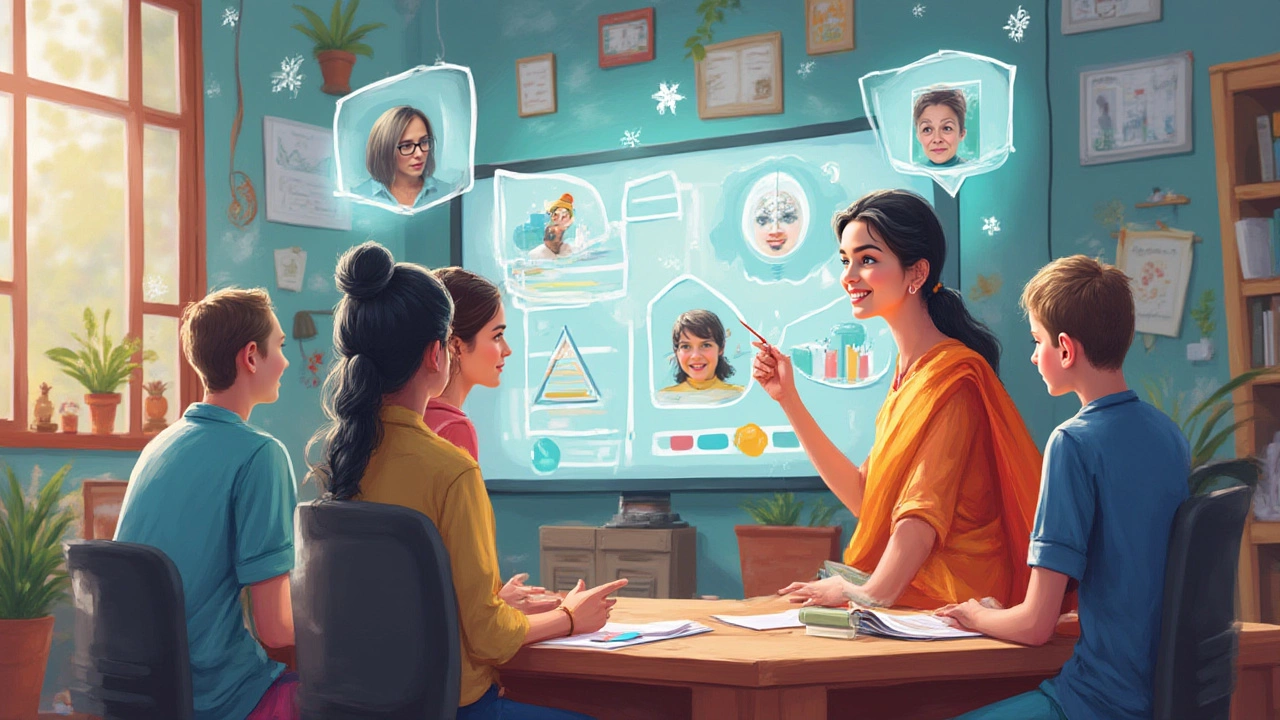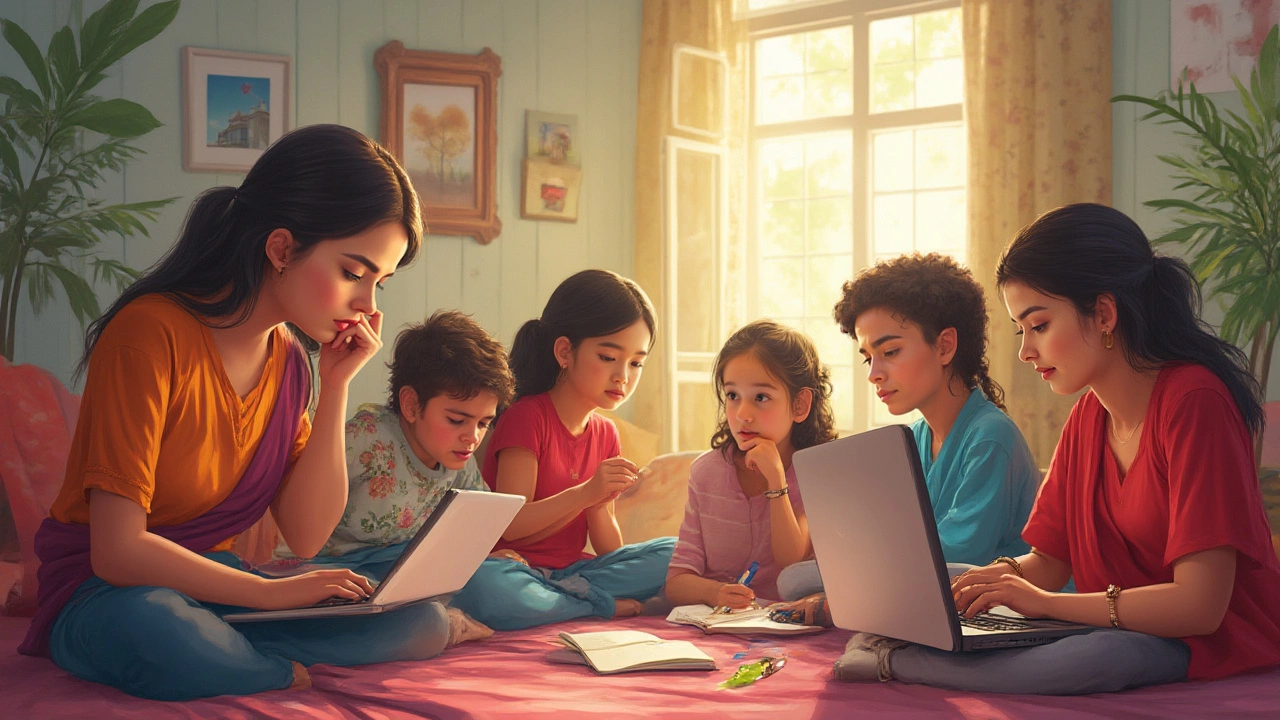Think about waking up, sipping coffee, checking your emails, then joining your college class or training session without even putting on shoes. No campus. No commute. Just your device, your Wi-Fi, and the digital classroom waiting for you. For millions around the world, this isn’t science fiction—it’s how they learn, work, and grow. But what exactly do we mean when we say 'distance education'? There’s more to it than just watching recorded lectures in pajamas or sending assignments late at night. This approach to learning is changing everything, from job qualifications and career paths to the way kids and adults alike access knowledge. Some might wonder: How trustworthy is this new format? Can remote learning ever match up to traditional face-to-face education? Surprisingly, for most people, distance education opens doors no classroom ever could.
What Does Distance Education Mean?
Distance education (sometimes called distance learning, online learning, or remote study) is a way of teaching where students and teachers are not in the same physical location. Sounds simple, right? But don’t get fooled. While the idea has been around for over 170 years—yes, really, since the first correspondence courses sent lessons by mail—it exploded in relevance once computers and the internet showed up. By the 1990s, more and more programs were setting up virtual campuses. Today, you can find teenagers in Brazil taking a creative coding class taught from New York, or single moms in Kenya earning U.S. university degrees without ever leaving their hometowns.
The simplest way to define distance education is any learning process where the teacher and student are separated by physical distance, and technology is used to bridge that gap. That technology might be old-school, like posted mail (believe it or not, plenty of university courses in the 20th century were delivered only this way). These days, though, it covers everything from live online video lectures, interactive discussion boards, and self-paced learning portals to mobile apps and even virtual reality classrooms. The key: connection without proximity.
Why does this matter so much now? Universities, businesses, and private instructors seized on distance education for its flexibility. The COVID-19 pandemic supercharged its adoption—at the peak in April 2020, UNESCO estimated that over 1.5 billion students were learning outside a traditional classroom. Even after things returned to “normal,” many preferred virtual formats for their custom pace and low costs. That’s a huge shift! The U.S. National Center for Education Statistics reported in 2024 that more than 60% of college students enrolled in at least one online course.
But here’s something most people don’t realize: Distance education isn’t just about convenience. It rethinks what it means to be a learner, blending content delivery, real-time support, and self-direction. A student in a remote village can access the same Ivy League lectures as someone living across the street from the university campus. This kind of access evens the playing field, but it also comes with new responsibilities. You have to motivate yourself, manage your own time, and sometimes find answers on your own. If you crave freedom and dislike being boxed in by schedules, distance education feels like a dream. If you need a nudge or miss chatting with classmates face-to-face, it can feel isolating unless you find ways to stay connected.
Distance education works best when it’s more than just “transferring” classroom teaching onto a screen. The good programs take advantage of what technology does well. They use interactive forums, automated quizzes for instant feedback, group projects in virtual breakout rooms, and sometimes even AI tutors. That variety is key: good distance learning isn’t passive watching, it’s participation and connection, just delivered a different way.
The biggest misconception is that distance education is somehow “less real” or less valuable compared to sitting in a classroom. But employers are beginning to think differently. A 2023 LinkedIn survey found that over 80% of recruiters considered accredited online degrees just as credible as traditional ones, especially when they came from well-known universities. Tech companies like Google, IBM, and Microsoft even created online courses that count as job credentials—sometimes, those certificates matter more than a traditional diploma, especially for fast-changing fields like coding, data, or digital marketing.
So, distance education isn’t just convenience—it’s a new model for lifelong learners, working professionals, and anyone who wants to fit study into a busy schedule. The definition has grown and changed, but the core idea stays the same: making education possible wherever you are, thanks to technology. Next time you hear someone doubt it, think about the sheer number of success stories made possible only because someone clicked “log in” instead of pushing open a classroom door.

Real Benefits and Challenges of Distance Education
Let’s get honest: For every student who raves about the freedom, there’s another struggling to keep up. Distance education offers serious upsides, but it’s not without obstacles. If you’re weighing the pros and cons, here’s what really makes the difference.
First, talk about flexibility. Distance learners control their own schedules. That’s not just helpful for parents, people with jobs, or those spread across time zones—it’s often the only way some folks can earn a degree. In 2024, the U.K. Open University revealed that over 70% of their students work full time while studying. Millions use their evening or weekend hours to log in and catch lessons. In a world where juggling family, work, and personal needs is the norm, synchronous classroom times just don’t fit most adult lives. With distance education, you decide when and where learning happens.
Cost is another big draw. Tuition fees for online courses are usually lower than traditional in-person degrees. On top of that, skip the costs for commuting, campus housing, parking, and pricey textbooks (many online classes use free digital materials). Coursera, one of the biggest platforms, lets you audit most classes for free—only charging if you want a diploma. Some U.S. universities even offer fully accredited online bachelors for a fraction of the price of their on-campus versions. That means less debt and more access for people who might never have considered college before.
Then there’s access. Barriers like geography, disability, or family obligations are less of a problem when you can study from anywhere. As of July 2025, over 700 universities worldwide offer degrees that you can complete entirely online. Rural students, single parents, or those caring for relatives don’t have to relocate or give up their goals. Online platforms like Khan Academy, FutureLearn, and edX provide free courses for anyone with an internet connection, so anybody can level up their skills or try out a new field without risking a financial disaster.
Interaction looks different, but it’s not missing. You swap hallway chat for video calls, forums, and instant messages. At first, that can seem cold, but smartly designed courses stir up lots of real engagement through group projects, debate threads, and collaborative tools. The best online teachers don’t just present slides—they get you talking, thinking, and arguing (nicely!) with classmates around the world. That’s more than passive learning; it’s active participation.
Yet, there’s no sense pretending everything’s perfect. Self-discipline is the real hurdle. Remember that joke about watching one more episode before you sit down to study? Nobody’s there to check your attendance or offer a stern look. If you struggle with motivation or time management, distance ed can quickly turn into a source of guilt and half-finished assignments. Some students admit to feeling disconnected or lonely—without a physical campus, it takes extra effort to make friends or ask for help. That’s why support systems matter. Good programs hold regular live check-ins, online office hours, and offer strong mental health resources because, let’s face it, learning alone can feel tough.
Tech problems are the other headache. Not everyone has high-speed internet, a reliable laptop, or a quiet home space. The World Bank reported in May 2024 that in lower-income countries, over half of students face regular interruptions due to power cuts or weak connections. Some universities now lend out devices or set up local tech support, but the digital divide is still a thing.
Is distance education easier than in-person? Not usually. Standards are just as high. Cheating is harder than it looks—proctoring software, plagiarism checks, and timed exams keep everyone honest. Instead, flexibility works both ways: you get to decide when you study, which means you have to take responsibility for the results.
So, what’s the trick to making distance education work for you? A few real-world tips make a difference:
- Create a dedicated study space (even if it’s just a tidy corner or a seat at a café).
- Set up a routine and stick to it—treat “school time” like you would an in-person class.
- Make friends in forums. Networking isn’t just for future job hunts—your classmates can actually help you survive stress and motivate you.
- Don’t be afraid to ask for help. Use instructor office hours, tech support, or crisis resources if you’re stuck.
- Work in short sprints. Most people can focus best in 25- to 40-minute bursts, with short breaks in between.
- Turn off social media notifications while studying. You’ll be amazed how much faster you finish assignments.
The real win? Once you master distance learning, that self-motivation and time management will help in every other part of life. It’s not just career skills—it’s personal growth, flexibility, and lifelong curiosity all rolled into one.

Types of Distance Education and How Technology Is Changing Everything
Sure, you’ve probably heard about online college courses. But “distance education” is way bigger than one format. Today, it covers everything from watching a YouTube physics lesson to earning a graduate degree from your kitchen table. If you want to know what’s out there, here are the main approaches making waves in 2025:
- Asynchronous learning: You work at your own pace. Lectures, readings, and assignments are posted online, and you have deadlines, but you pick when to log in. Think Udemy, edX, or large open courses like MIT OpenCourseWare. Best for independent learners who like to schedule study around work or family life.
- Synchronous learning: Classes still meet “live,” just virtually. You join lectures or discussions via Zoom, Teams, or other platforms at set times, interacting with teachers and classmates in real-time. Many universities blend live and recorded content so you get both flexibility and real connection. Good for people who crave structure or want to participate in group debates.
- Hybrid or blended learning: Combines the best of both worlds—some sessions online, others face-to-face. This is common in nursing, teaching, or sciences, where you need both hands-on practice and the flexibility of online study.
- Massive Open Online Courses (MOOCs): Free or cheap, MOOCs like Coursera or Khan Academy opened the gates to learning for anyone, anywhere, as long as you have internet. They don’t always count towards degrees, but are perfect for skill-building or exploring subjects outside your career.
- Correspondence courses: The “old school” model—assignments and lessons mailed out, then sent back for grading. Some rural districts and prison education programs still rely on paper-based courses where the internet isn’t available.
Technology is the great enabler here. Five or ten years ago, online learning mostly meant clicking through PowerPoint slides. Today? Students work together in virtual labs, interact with AI chatbots for instant feedback, and join global study groups through platforms like Discord or Slack. With the rise of 5G and improved connectivity, high-definition video classes and AR/VR lessons are becoming a lot more common. Imagine practicing surgical skills or touring Ancient Rome thanks to a VR headset—this is no longer just a dream for tech nerds, but real options for students worldwide.
Accessibility tech is also widening the reach of distance education. Hard of hearing? Subtitles and live captioning are built into many platforms. Visual impairment? Screen readers, high-contrast modes, and keyboard navigation open up lessons for all. Some universities, recognizing the importance of inclusivity, now design courses with accessibility in mind from the start—no more afterthoughts or patchwork fixes.
Testing and assessment? Forget about only writing essays or filling out multiple-choice forms. Distance education programs now use video presentations, interactive projects, peer review, and even “portfolio” assignments that prove mastery in real-world scenarios. All this isn’t just for fun; it mirrors how modern workplaces actually operate, making graduates more “job ready” than ever before.
Let’s not pretend it’s all smooth sailing. Security and privacy are growing issues—schools and students have to safeguard data from hacking or unauthorized sharing. Plus, digital fatigue is real. Spending long hours before screens can bring headaches, burnout, or a sense of disconnect. The best courses balance high-tech solutions with mental wellness, mixing in screen breaks and optional offline assignments to keep things human.
Wondering if all this digital interaction actually delivers? In January 2024, the U.S. Department of Education released a study comparing learning outcomes for online and in-person students at public universities: the results? On average, online learners performed just as well—or slightly better—if they engaged fully, asked questions, and stayed organized. That’s a big nod to the power of motivation and engagement, not just the “physical” classroom.
So where does distance education go from here? Expect more AI-powered tutors, global classrooms with students from multiple continents, and even certifications, badges, or micro-credentials that count toward real jobs. It’s education on your terms, supercharged by technology, and more personal, interactive, and empowering than ever before.
After all, isn’t education supposed to fit your life—not the other way around? Welcome to the future, where your next teacher, classmate, or career step is just one secure log-in away. That’s the true definition—and promise—of distance education today.
